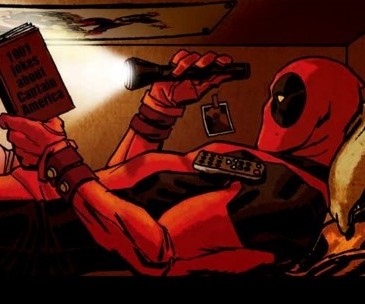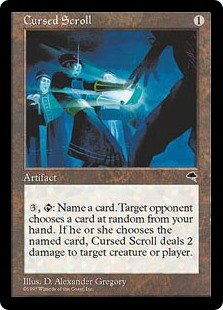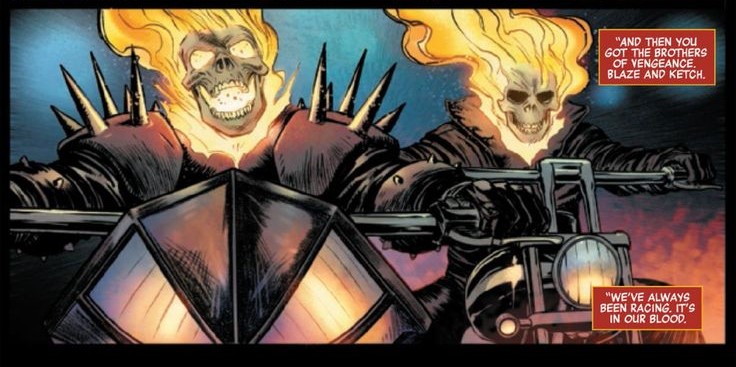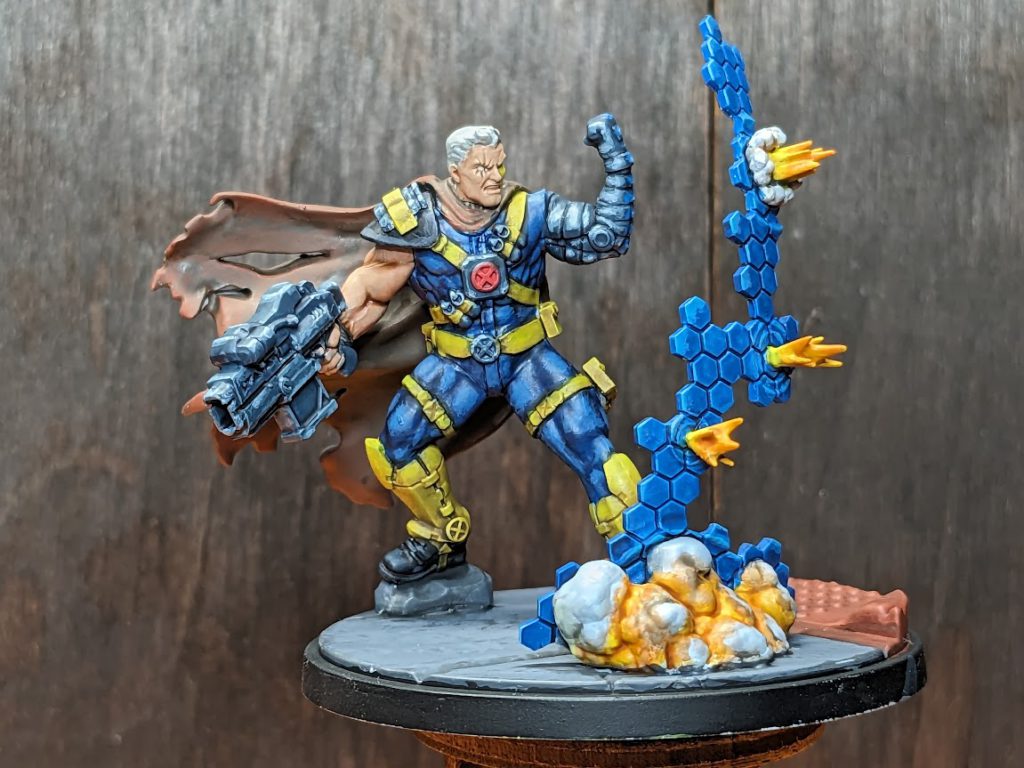
Welcome back to X-Ceptional Reading, the blog that puts the post into”Post-rationalising your losses.”
Last month I wrote about mistakes and how they can be understood by applying Chess theory to MCP games. This got me thinking about a towering classic of game theory. If you haven’t read “Who’s the Beatdown” by Mike Flores maybe take 10 minutes to read it now. This blog will still be here when you get back.
Who’s really the Beatdown?

Who’s The Beatdown talks a lot about Magic: the Gathering cards that no-one has cared about since 1998, but it has a really key lesson in it, which Flores sums up here:
“If you are the beatdown deck, you have to kill your opponent faster than he can kill you. If you are the control deck, you have to weather the early beatdown and get into a position where you can gain card advantage.”
This simple paragraph is an amazing explanation of something key to so many two player competitive games – game pacing. Bear with me here and trust me – it doesn’t matter if you’ve never played Magic.
The beatdown player – in Magic, generally the one who spends the early game playing creatures and attacking – wants the game to finish in as few turns as possible. The control player – in Magic, the player who is trying to kill those creatures and stop more appearing – wants to stretch out the game until he can accrue enough advantage that the early scoring (damage in Magic) doesn’t matter any more.
Who’s the Beatdown is quite famous, and comes up quite a bit in MCP discussion. It’s unintuitive in our game though, because the “fighty” teams are not normally, in practice, the beatdown.

In MCP, the teams we sometimes call “control” or more often “scenario” are actually those who want a fast paced game, who want early scoring and who want the game to finish in as few turns as possible. That’s the beatdown.
Attrition teams want to attack models, daze them and in particular KO them. They want to slow the scoring down, lower the pace of the game and invalidate the early scoring of the “control” team by preventing them from scoring more in future turns. That will eventually make their victory inevitable because they will have more characters left and be able to score most of the points on the board uncontested.
What’s the Beatdown?
I think what Mike Flores really hits on here is a trade happening within the game – the beatdown player is trading material advantage for scoring advantage. They are turning their available resources – cards in hand in Magic – into points directly – damage.
In MCP, scoring teams trade their main resources – actions of their characters, and their power – directly for points, by moving on to secures, picking up or stealing extracts, and moving enemies off secures. They aren’t seeking to trade those actions for their opponents future actions by dazing and KOing models, they are skipping straight to the end game and focusing on the score. That may involve attacking, but often that’s a very inefficient and risky way to trade for points. Attacking a model on a secure requires you to daze them to score that secure. Pushing or throwing them off requires nothing more than for them to have already activated and be unable to move back on.
So what’s the other side of that equation? The attrition player is seeking to trade their resources for material advantage – that is, they are seeking to trade their activations for their opponent’s at a favourable rate, so that eventually they have far more available activations and can turn that into points.
In that way the attrition player is the true “control” player in MCP, seeking to control the pace of the game by removing his opponent’s models.
Famed Beatdown Team, Web Warriors
Here’s an example to convince you I’m not just flapping my gums.
Imagine the winning Adepticon Webs list, by Quebec Tango, against his opponent in the final, Vince Curkov’s SHIELD. Webs have prio, and the scenarios are Deadly Meteors and Struggle for the Cube (Webs have picked their extracts).

There are 8 available points on the board each round, and Webs can ensure they get 3 of the 5 extracts. This means they will have a scoring advantage if they can score 2 of the Secures, and will win round 4 if nothing changes.
SHIELD then are the team who have to interact with the opposing team, remove activations and eventually models through attacking. Webs are incentivised to instead ignore their opponents material (the actions of their characters) and focus their resources on scoring.
Is this useful?
I believe “the Beatdown” can help players adjust their mindset for scenario and attrition teams. When you play attrition, you are not in a race – you need to focus your resources carefully on removing your opponent’s models and understand that you are patiently setting up future turns when you can flip the scoring and go ahead. You aren’t hurrying to overcome some crushing advantage your opponent has – it’s the other way around.

For teams playing a scoring role, sometimes you will need to sacrifice a model purely for points – for example by double moving your healthy long mover on to your opponent’s back point despite the high likelihood of getting them dazed next round. In my most recent tournament loss, Paul Campbell (the Bovine Overlord himself ) did this really well. Late in round one he double moved Crystal to my back Madman trap to flip it uncontested. Black Panther dazed her early round 2 and KO’d her round 3, but it gave him an extra VP round one. The final score? 16-15 to Paul.
At a basic level, you can apply this as “if I’m the beatdown, the first thing I should look at every turn is my points. If I’m not the beatdown, I should first be looking at my opponent’s points”.
Role for Prio
The tricky part here is that there are not actually “beatdown teams” and “control teams”. There are only teams playing that role when compared to their opponent.

In every game of MCP, one team will be more likely to win quickly with minimal interaction than the other. That player is the beatdown. In MCP, Hellfire Club are normally a heavy scenario team who will be looking to score out turn 3 or 4. A good Hellfire player though will understand that if they lose prio to Webs on Riots and Spider Infected, they are not advantaged on scoring and will need to kill some models to make up the difference.
So role changes depending on matchup – but it *also* changes inside a game. Hellfire are very likely the beatdown against a Steve 1 Avengers team with Cable and Baron Zemo on Riots/Alien Ship, for example, because that Steve team has brought models who excel at dazing and KOing characters and do not have displacement or extract steals, which directly score points without relying on damage.
However, if Cable safely grabs an extract turn 1, and Zemo gets lucky and dazes Lizard on the midline to take his extract and win his secure, Steve suddenly can go up 5-3. That puts a highly defensive team on track to win turn 4 easily if nothing changes, so the Hellfire player needs to start interacting – likely by trying to daze Zemo before he gets back within bodyguard range of Steve or by dazing Cable and taking his extract.

Figuring out what role you should be playing at any given moment helps connect what action you can take with how you are going to win. If you are ahead on points and likely to score more than your opponent, you just need to figure out what actions advance that state – even if that’s double moving away into the corner. If you are behind, you need to interact, often by trying to daze and KO your opponent’s scoring models.
Pivoting for Points
One way this comes up a lot in MCP is seeing players pivot from scoring focus to attrition focus – either to turn scoring around when they lose the beatdown role, or to turn the corner and put the game beyond their opponent when playing the beatdown.
Playing Wakanda over the past month has reminded me how good Black Panther is at this. He can spend the first two turns of the game long moving and pushing people off points, then when needed activate Mantle and throws attacks with full rerolls into whoever is next to him. Panther spends most of his time on the table as a premium points scoring piece, but can pivot to attrition very well when needed
Zemo has a similar advantage, from the other side. He’s perhaps the best damage dealing 3 threat, but can double move on to a secure and be tough enough to keep it when needed, or pick up an extract and run away as well as almost anyone.
Revenge on Ross
My last game in the recent Scottish monthly tournament illustrates this point well. Playing against my friend Ross (who showed me why I shouldn’t be taking Montesi by beating me on it in a previous post) I had priority on Demons/Hammers playing as Wakanda against Web Warriors.
I went into this match believing I was the beatdown, planning to use Spirit of Wakanda and Amazing Spiderman to take Ross’s home Hammer and go 5-2 up round one, then protecting my lead and rushing to 16 points. I took a side Hammer with Black Panther turn 1, expecting an Eyes grab from Ross’s Bill in return. Ross caught me sleeping by playing Eyes on Hulk and taking his home and the remaining side Hammer.
This changed the character of the game, because I was no longer in a position where I could try to not interact with Ross and let him come to me while scoring 5 points a round. Ross has Hulk with 2 hammers and 2 steals in his team, so would (and did) go ahead on scoring pretty quickly. Instead, I needed to start taking out his models. This ultimately meant that I needed to throw my models into the mid board, accept that Hulk was going to daze them while they chipped damage in, then use priority to focus Hulk down. Ross had taken the beatdown role by grabbing both hammers and setting up two turn 2 steals. I needed to counter that by trading my activations for his material – using actions to attack his characters.
In the end, M’Baku (a model who can displace size 4 but can also throw a lot of attack dice), two Godhunters from Beta Ray Bill, and Wakanda Forever (a card that often gives Wakanda displacement, movement and 3 attacks) were enough to finish Hulk and Miles and scoop all the hammers. That’s one of the real strengths of Wakanda right now – being able to bring tools that can function well in a beatdown or a control role.

Higher understanding through punching models
For me, Who’s the Beatdown helped me understand what I should be looking to achieve in any game, based on the score and how the game was looking to go. I think almost 25 years on it’s a really key concept to understand if you want to consistently win competitive heads up games, and it can help address analysis paralysis. It’s easy to feel that you could take any action and so you need to examine and eliminate them all. In reality only actions which further your win condition are worth considering. Role assignment and the concept of the beatdown can help that by giving you a strong rule of thumb as to what your win condition is – is it killing your opponent’s dudes or running away with all of the objectives?
Once you understand what role you’re playing in the game and what that implies about what you need to achieve, you can narrow down your possible options into desirable actions much more quickly.
If you’re the beatdown, your activations will often be best used moving extracts out of harm’s way or displacing your opponent’s models. If your opponent is the beatdown, you need to counteract that scoring pressure – normally by attacking models who are going to score points this round.
Even in situations where attacking is your only option, the beatdown helps make target priority decisions. If you are going to lose given the current state of scoring, you need to target models holding extracts or who are clearly going to be standing on a secure at the end of the round. If you have scoring momentum on your side, you should try to daze characters who can reverse that situation, who might be able to daze your own extract carriers for example. All Webbed Up gives Web Warriors a powerful tool in this situation, where they can activate someone like Miles Morales, give slow to more than one character (preventing them from effectively chasing extract holders) and then stand a really good chance of dazing one who could threaten their scoring pieces.

Who’s the Beatdown is really a framework for understanding your route to victory, and what steps contribute to that. It’s not a foolproof method, but it’s a great place to start if you’re struggling to understand what the best course of action is in your games.
Coming up next
I’m still working on my crisis scoring pace article, and I’m looking at a few more topics. I might write up some observations on Wakanda after 10 rated games with them, and I’ve been thinking about a “painting for events” article. If there’s something you’d like to see me cover, either comment here or message me on discord @almageddon84
Hopefully I’ll be back with another post soon, but until then, be X-cellent to each other.

